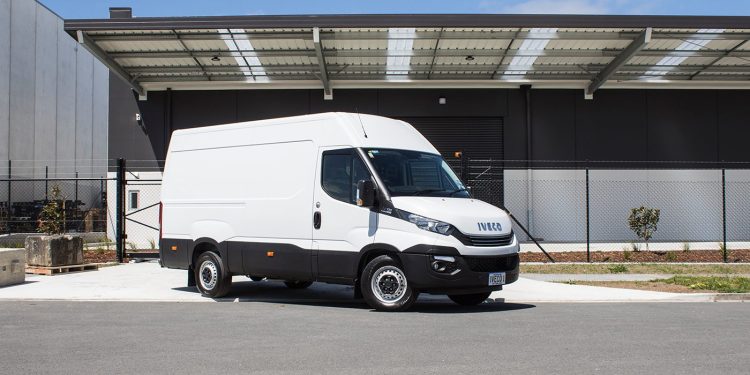2018 Iveco Daily 35S13 Panel Van review
Words Robert Barry | Photos RB
The Iveco daily panel van range offers a load volume capacity from 9 to 19.6 cubic metres make it one of the most versatile commercial vehicles on the market.
The Italian-designed and built panel van is available to our market in three internal heights: 1545, 1900, and 2100mm, while the vehicle’s length can vary from 5648mm to 7628mm, and the wheelbase from 3520mm to 4100mm.
The Daily presents a safer and more stylish option than traditional forward-control box-body light-duty trucks.
It’s also one of the most durable commercial vehicles on the market thanks to it’s truck-like body-on-frame construction which allows Iveco to market the Daily with a gross vehicle mass from 3.5 to 7.2 tonnes.
The 3500kg GVM Daily Vans come with the 93kW 2.3-litre inline four-cylinder turbo diesel engine as standard but there is an option to upgrade to the 125kW or 150kW 3-litre inline four-cylinder turbo diesel engine at an additional cost.
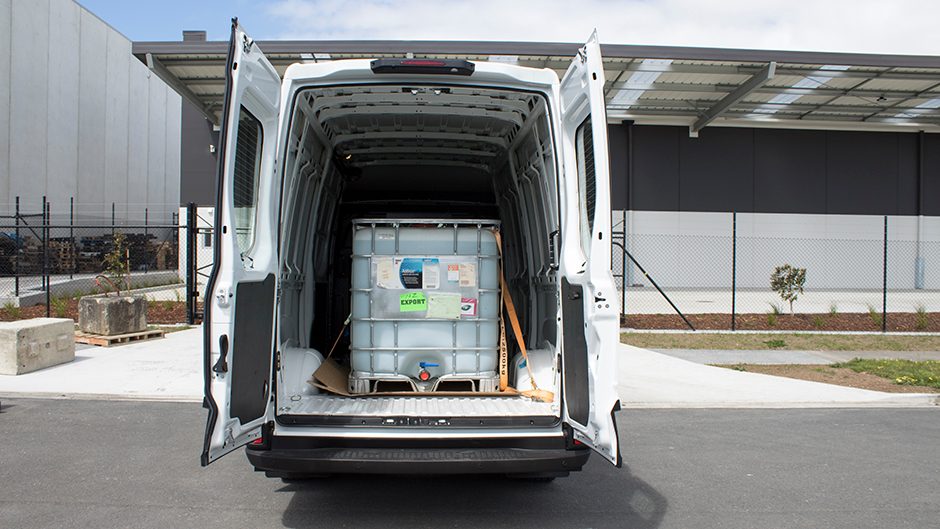
The 5000kg and 7200kg GVM Daily panel vans feature the 125kW engine as standard and these variants may also be upgraded to the twin-turbocharged 150 kW unit at an additional cost.
For this review Iveco New Zealand supplied the Daily 35S13 with the 12 cubic metre body, which means the vehicle on test is 6048mm long and 2580mm high. Internally the cargo area is 3540mm in length, 1740mm in width, and 1900mm in height, with a payload capacity of 1265 kg.
It’s most direct competitors would be the 11 cubic metre Ford Transit Cargo 350L panel van and the 10.7 cubic metre medium wheelbase/high roof Volkswagen Crafter panel van.
Our Daily test vehicle was fitted the 125kW 3-litre engine allied to the 8-speed Hi-Matic automatic transmission and to make our review a bit more real world and to show the capability of the vehicle under load, Iveco NZ loaded a intermediate bulk container containing not less than 1000 litres of AdBlue in the cargo area and strapped it down using the internal tie-down points.
Iveco says the new Daily boasts a reduction in fuel consumption of 4.1 per cent compared to the previous models.
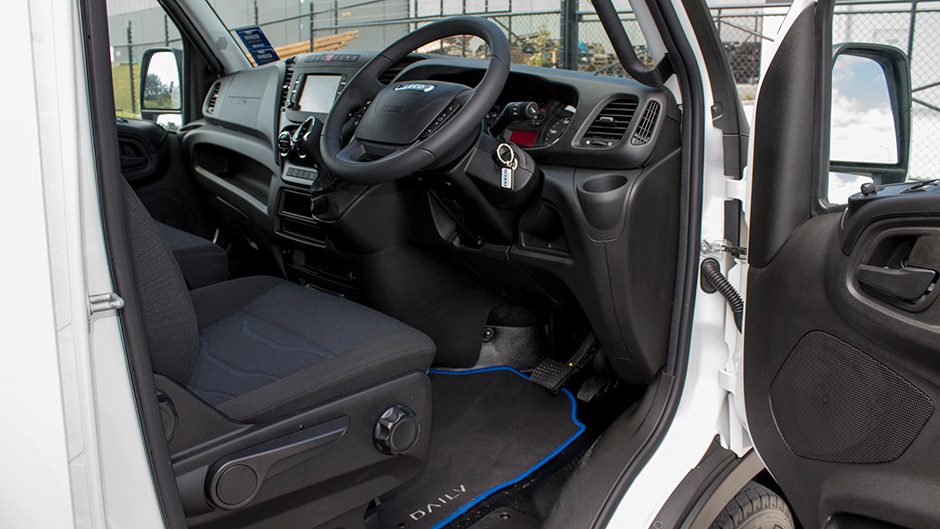
Lower fuel consumption is the result of a combination of features. The engines themselves now use low friction piston rings, and higher grade oils. Installing a ‘smart’ alternator also contributes to lower consumption when the driver releases the accelerator, it will begin to recover kinetic energy.
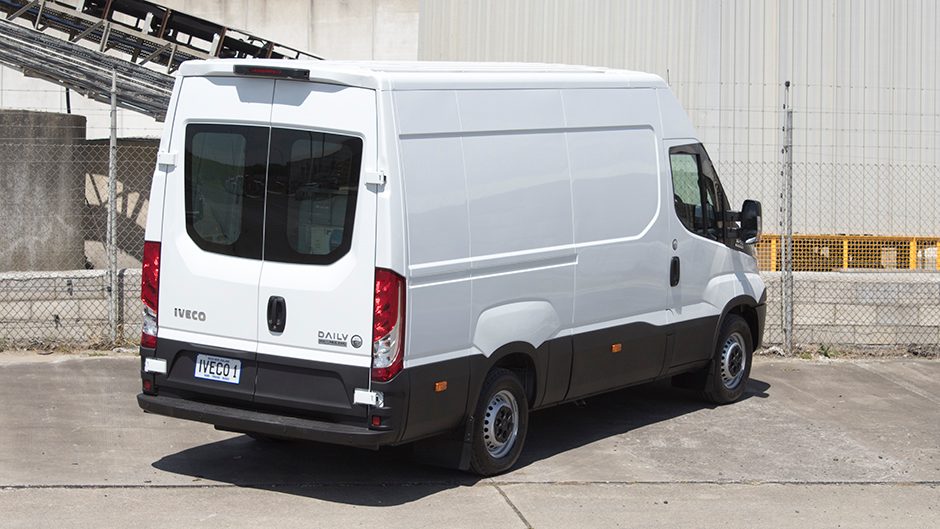
We averaged between 10L/100km and 13L/100km in a mixture of open road and urban running.
The 3.5 tonne Daily models have a new quad-leaf front suspension and for the single-wheel models, the rear suspension has also been redesigned, which has yielded a decrease in the height of the load platform by 55 millimetres to facilitate easier loading and unloading of the vehicle, as well as a reduction of oversteer in load transfers when cornering.
A combination of the new front and rear suspension systems, and the new longer wheelbases for the van range produce both a stable and very comfortable ride, particularly when laden and the steering response is also very sharp and precise for such a large commercial vehicle.
The Daily also offers front and rear disc brakes with ABS and EBD (Electronic Brake force Distribution), as well as active stability control, and a ‘Hill Holder’ along with driver passenger and curtain airbags.
Standard features in the cabin include voice controlled telephony, as well as Bluetooth, satellite navigation, climate controlled air conditioning, and cruise control. The Iveconnect infotainment system allows the driver to manage the audio, telephone and nav systems by using the 7-inch touchscreen on the dashboard.
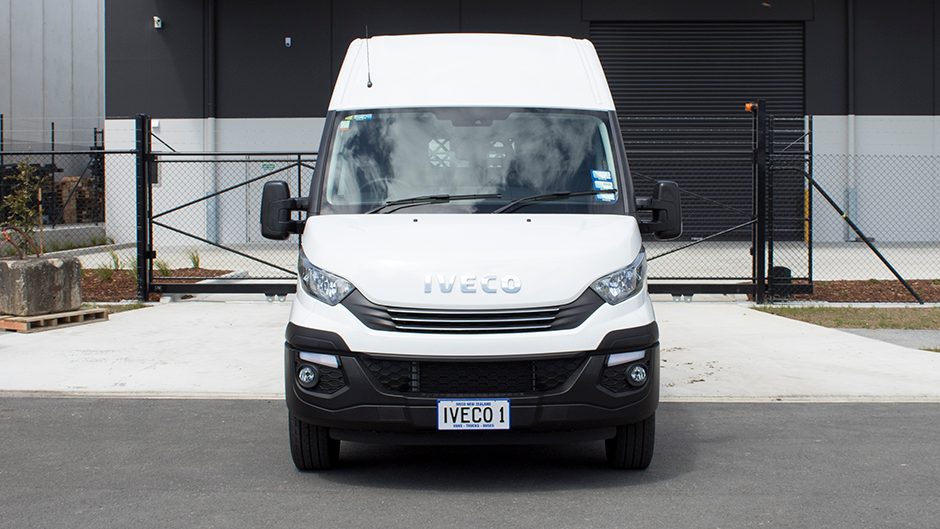
The system has a CD/MP3 player, two iPod compatible USB inputs, Bluetooth interface, SD card reader, and navigational maps. It also features four speakers and an integrated 4×20 Watt amplifier, and there are also radio and phone controls on the steering wheel.
My only gripe about the Daily was the strident female tone butting into the radio broadcast by announcing the current speed limit should you accidentally exceed it.
Having such a warning device is a great feature, but it could be a bit disconcerting at times.
Inside the cabin there is a myriad of storage compartments and cubbies, you can also store large bags under the twin passenger seat, which not only keeps them secure but also out of sight!
I’m a huge fan of cruise control in commercial vehicles and happily the system in the Daily is very intuitive and responsive – it held the set speed exactly on both ascending and descending gradients.
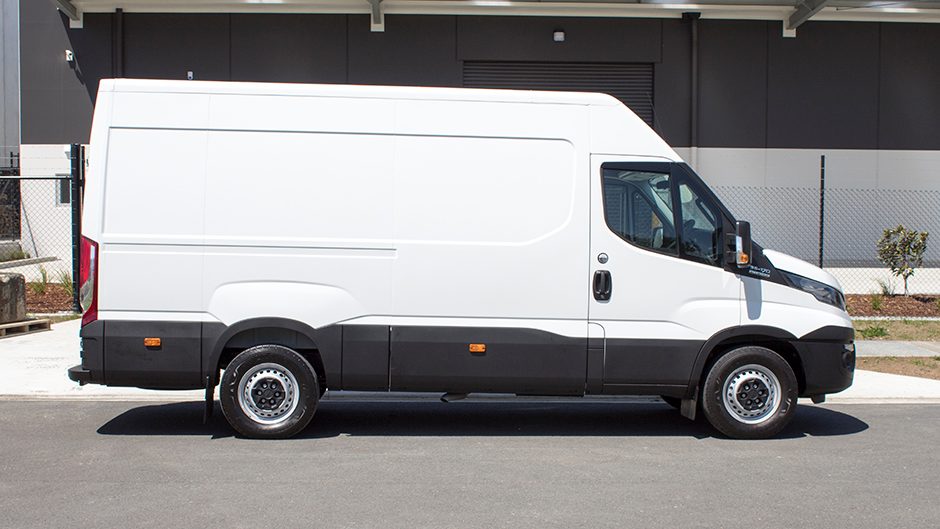
It also has an amazingly good turning circle, and despite its sizeable footprint, we had no issues temporarily parking the Daily in a loading zone in the Auckland central business district.
For a larger vehicle, it is surprisingly quiet when travelling at the legal limit on the motorway, being partially attributed to the cab’s lower coefficient of drag figure, of 0.316.
The new Daily has been designed to be both a tough and durable workhorse as well as a comfortable travelling companion, and this quickly became apparent during our time with the vehicle.
We would urge anyone considering a larger panel van from Ford, Mercedes-Benz, and Volkswagen to consider the Daily because they might just be pleasantly surprised at its friendly driving character combined with useful features and extraordinary capability as a load carrier.
| Model | 2018 Iveco Daily 35S13 | Price | |
| Engine | 2999cc, 4-Cylinder, 125kW/430Nm | Drivetrain | 8-speed auto |
| Fuel Use | 7.9L/100km | C02 Output | 0g/km |
| 0-100km/h | 0.00 sec | Weight | 2235kg kerb weight |
| Service | 40,000km intervals, 3 year / 200,000km warranty | Load | 12m3 volume, 1740m length, 1900m height |
| Vitals | 3500kg GVM, 1265kg payload, | Vitals | 3000kg towing capacity |


